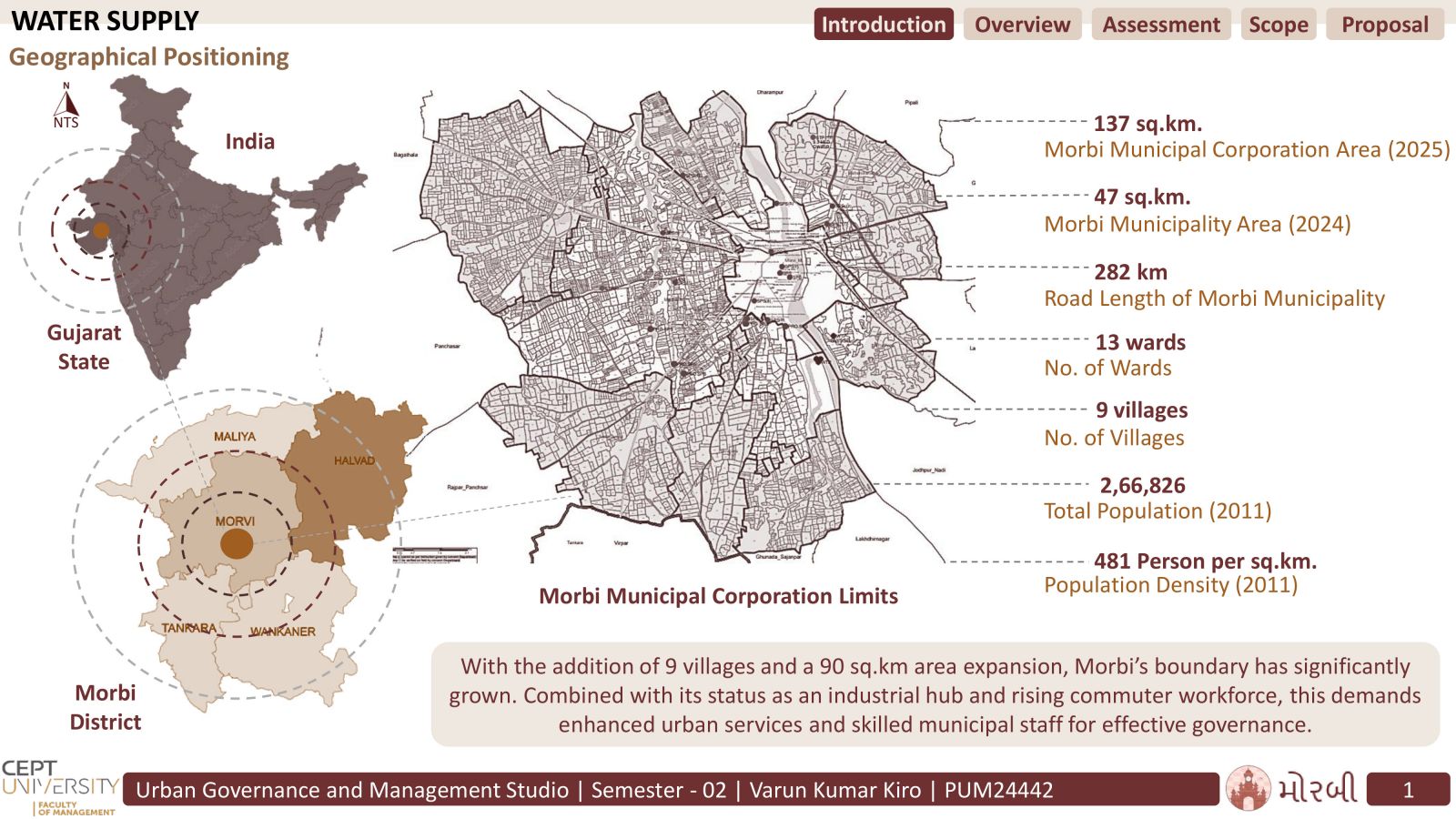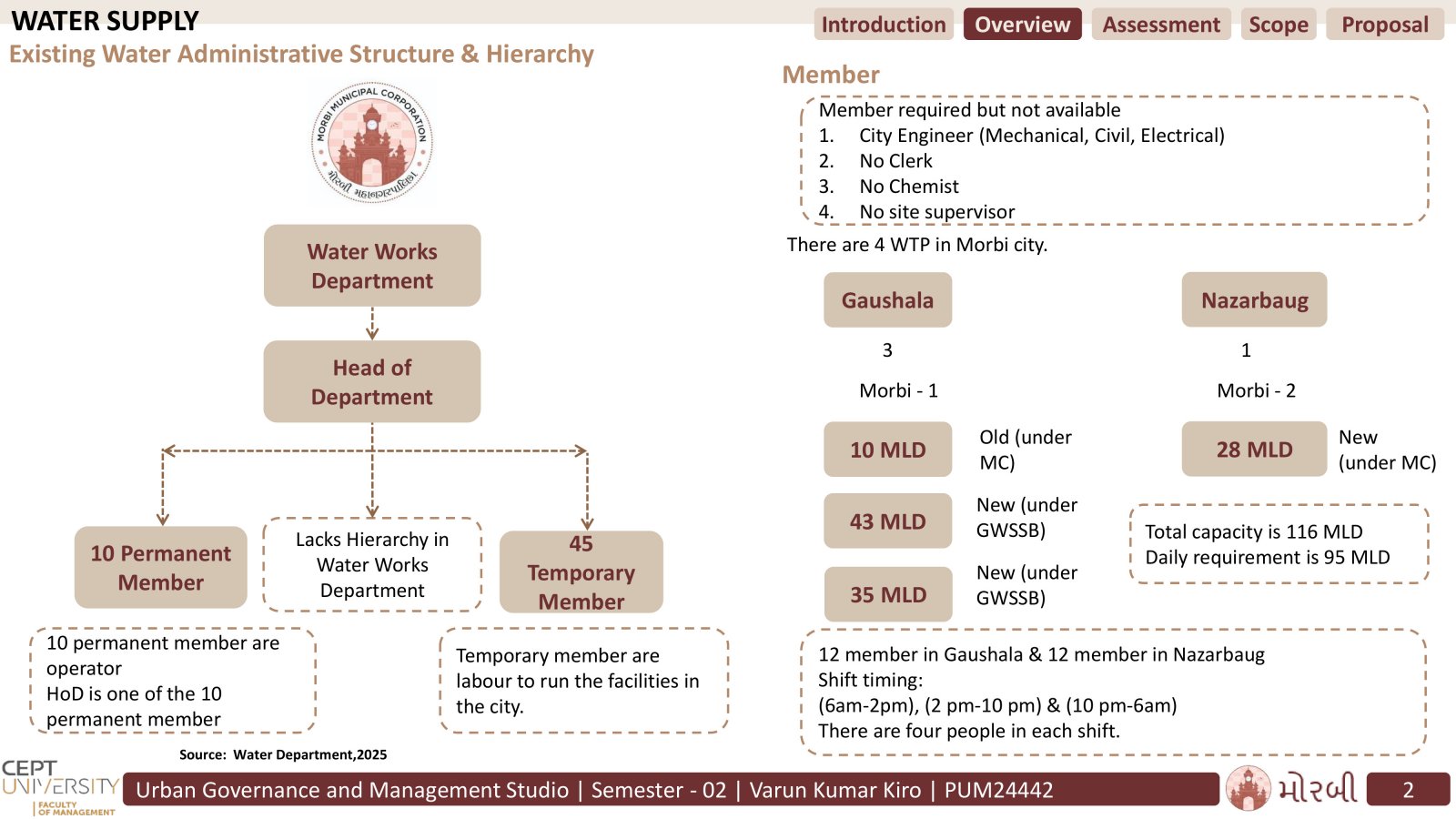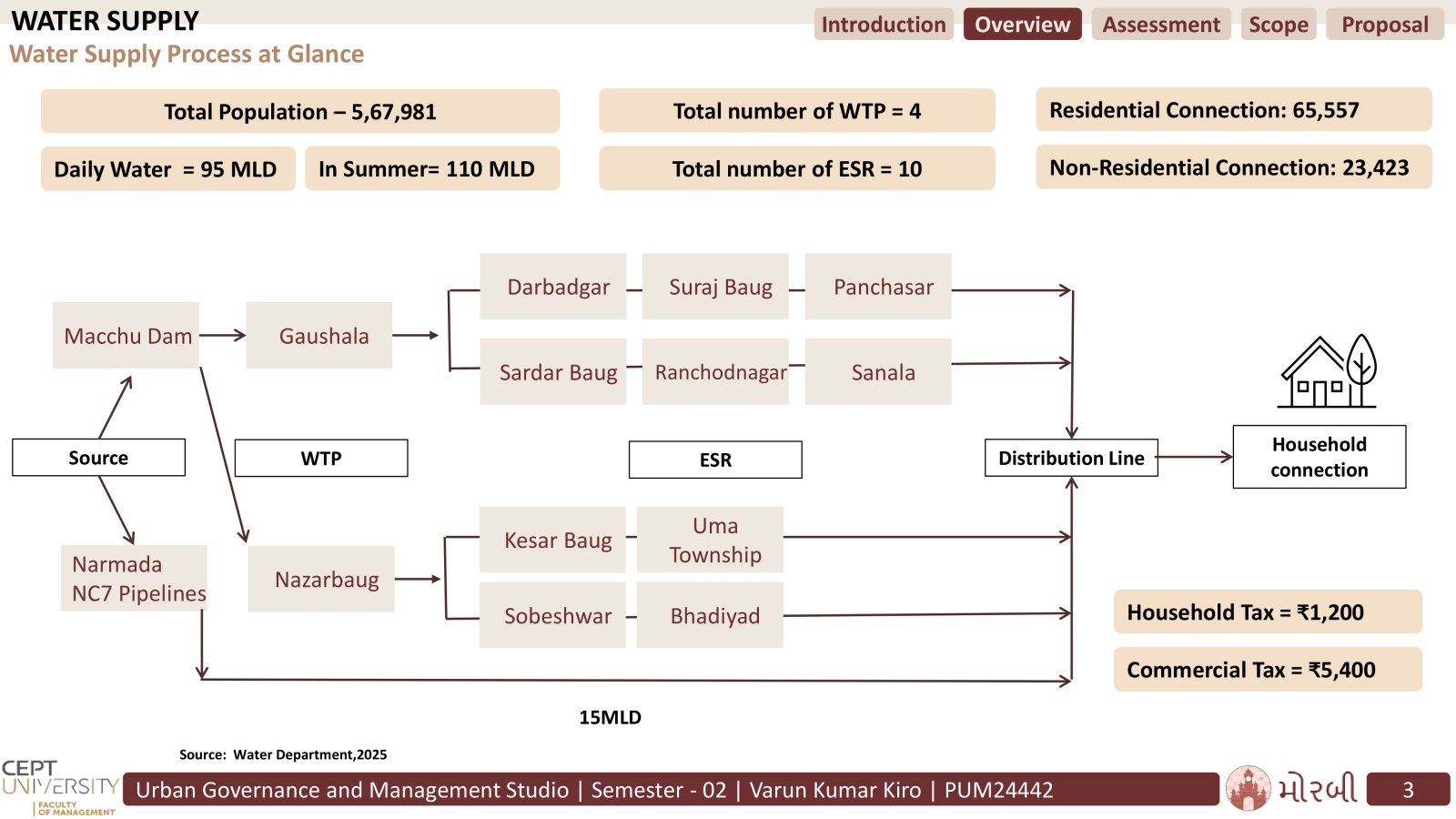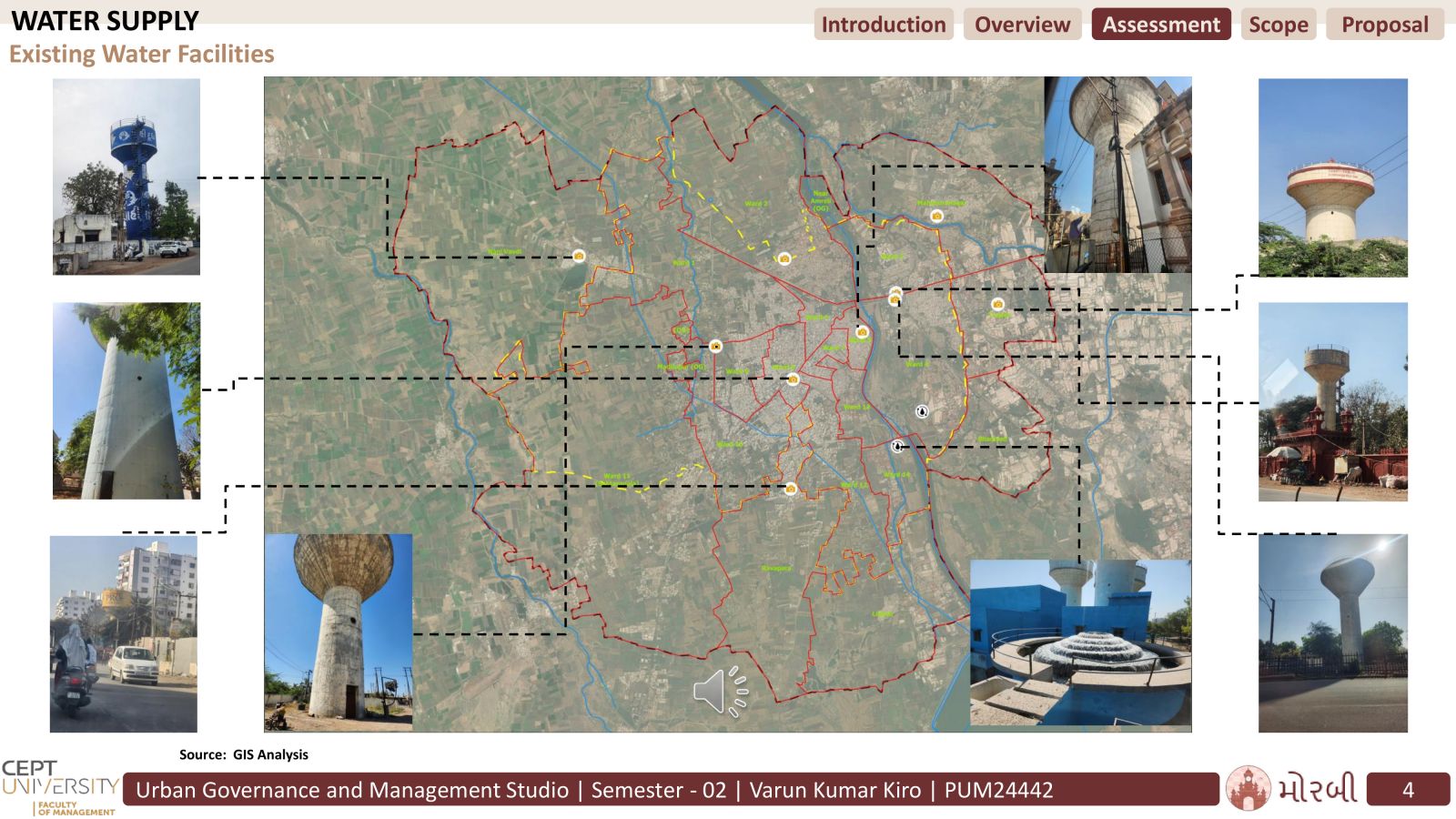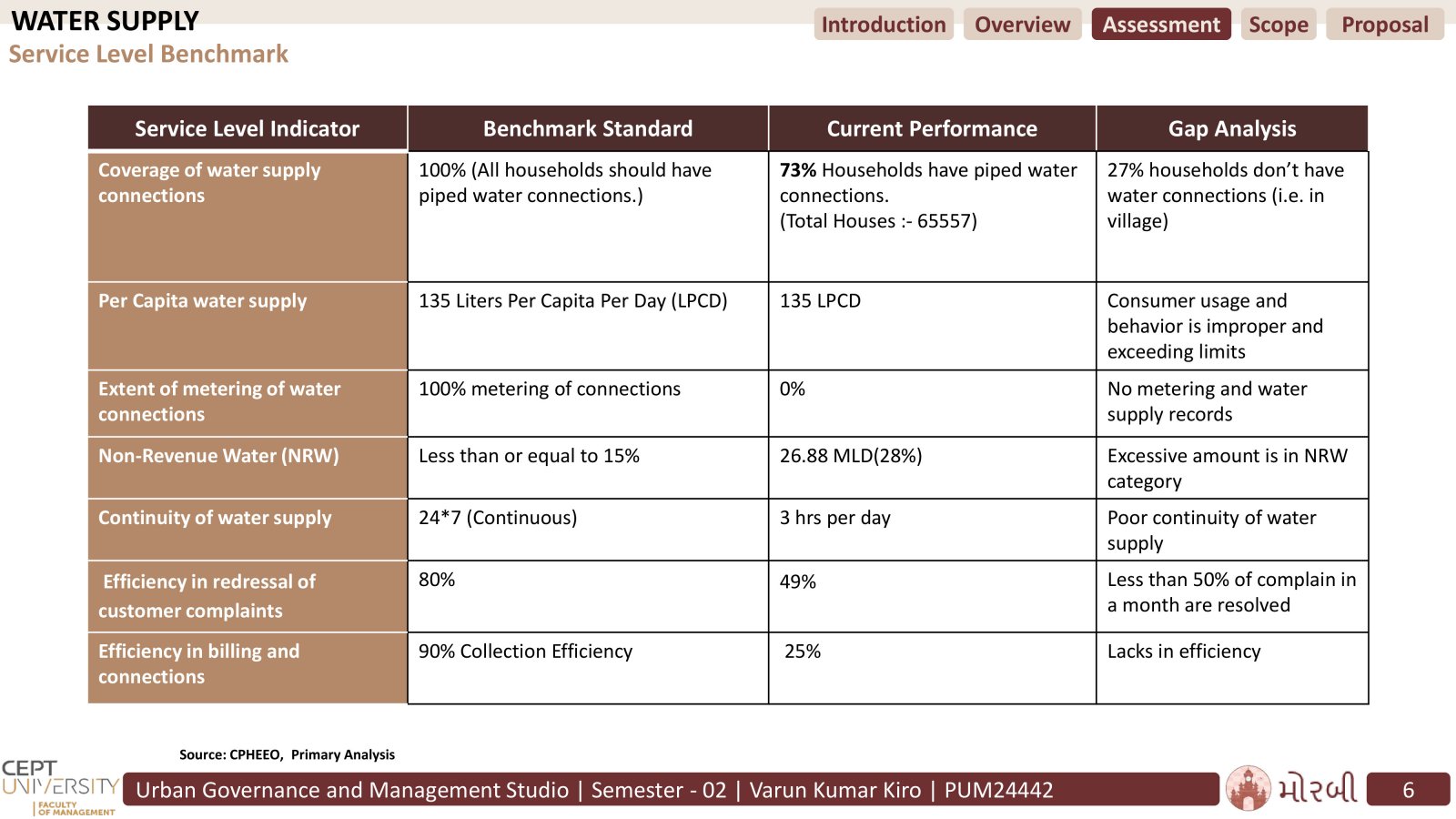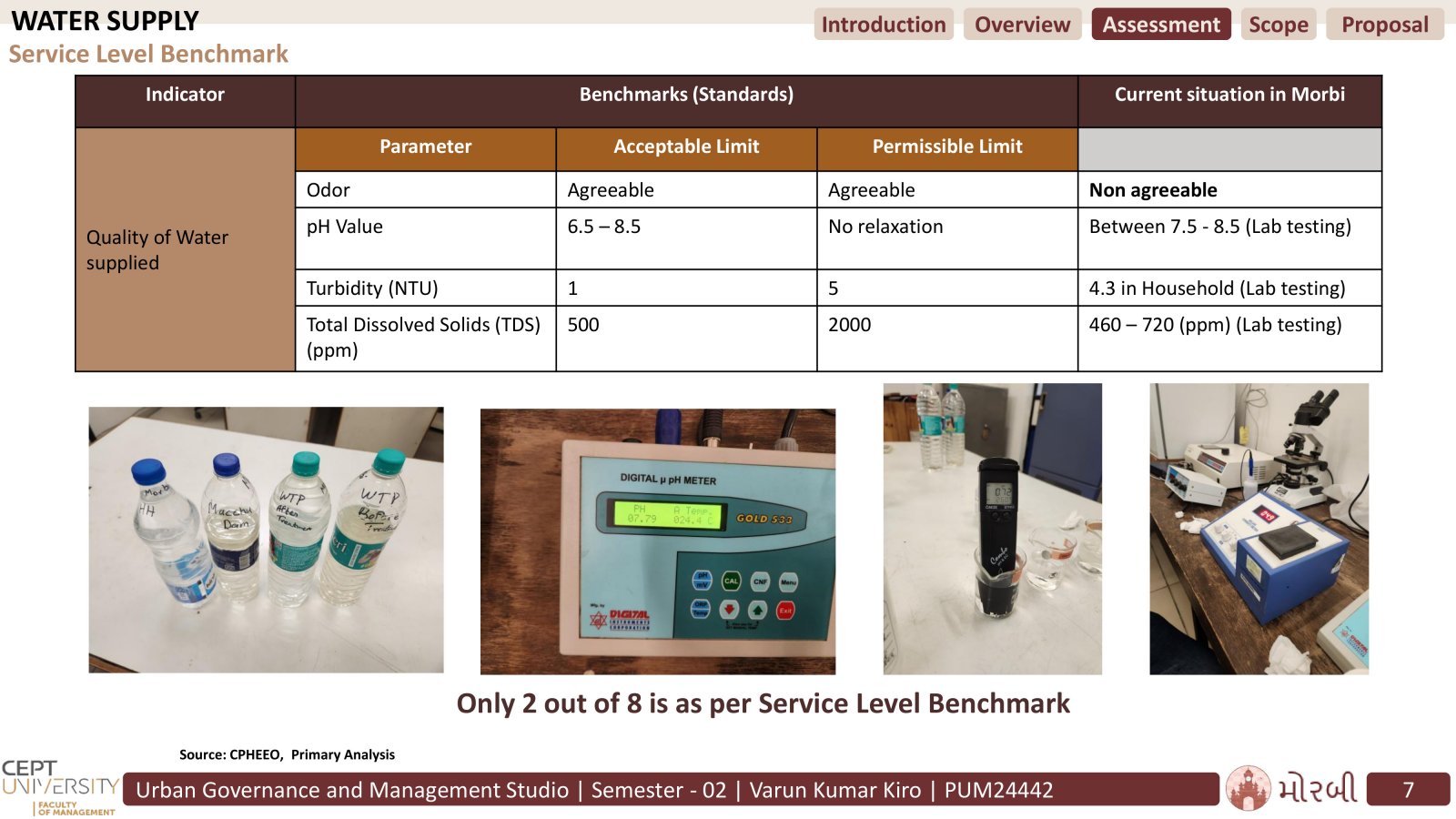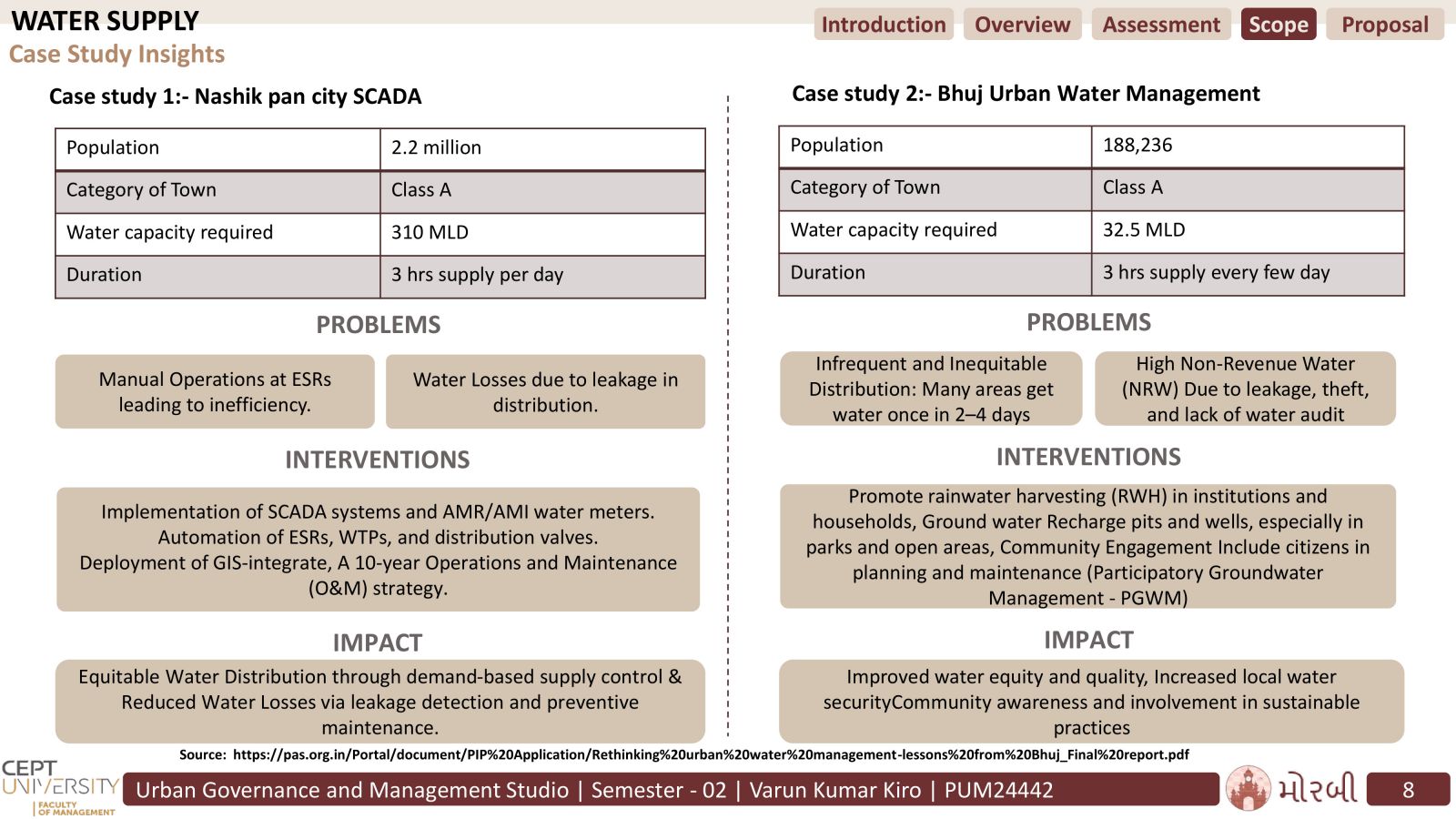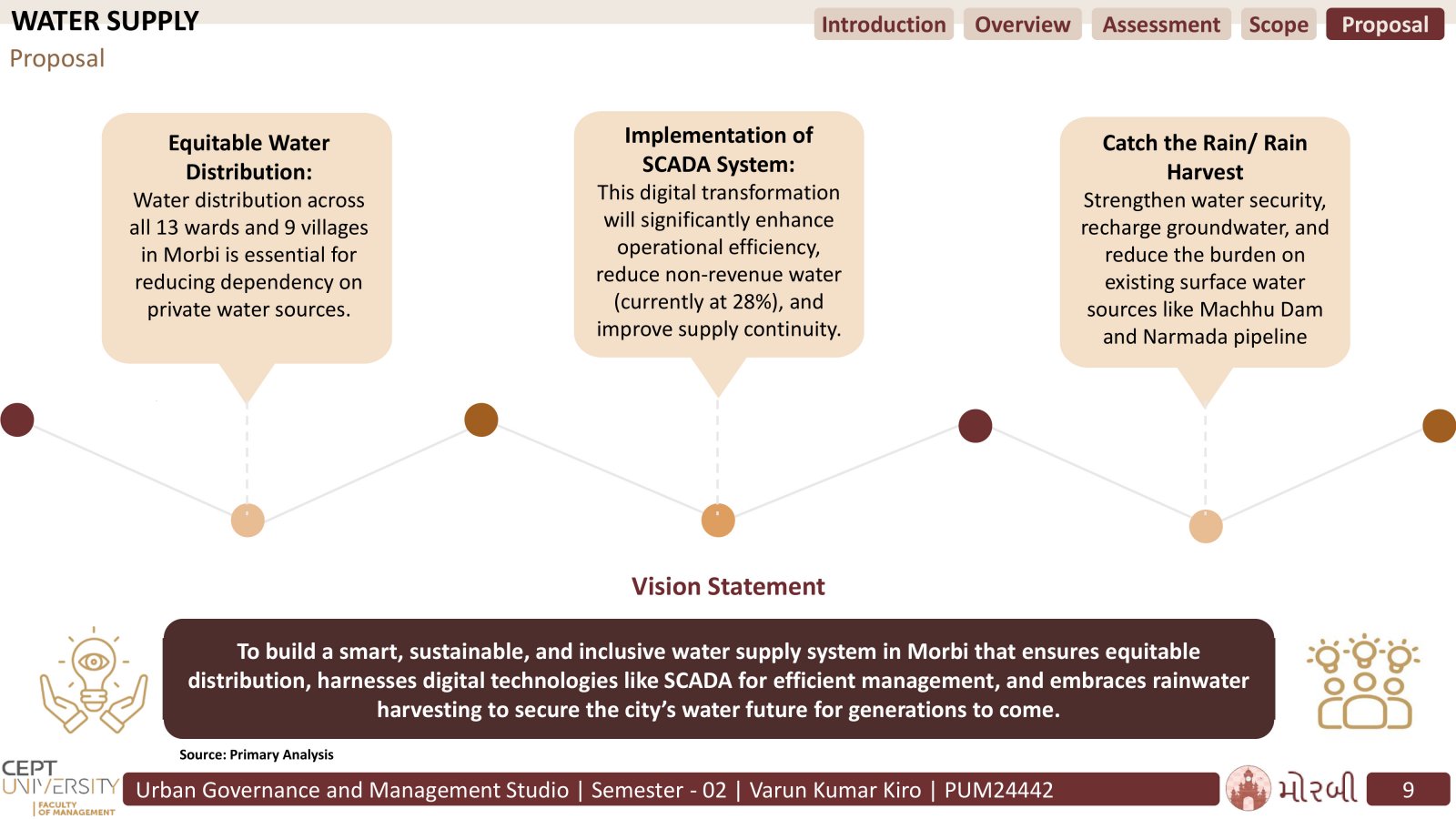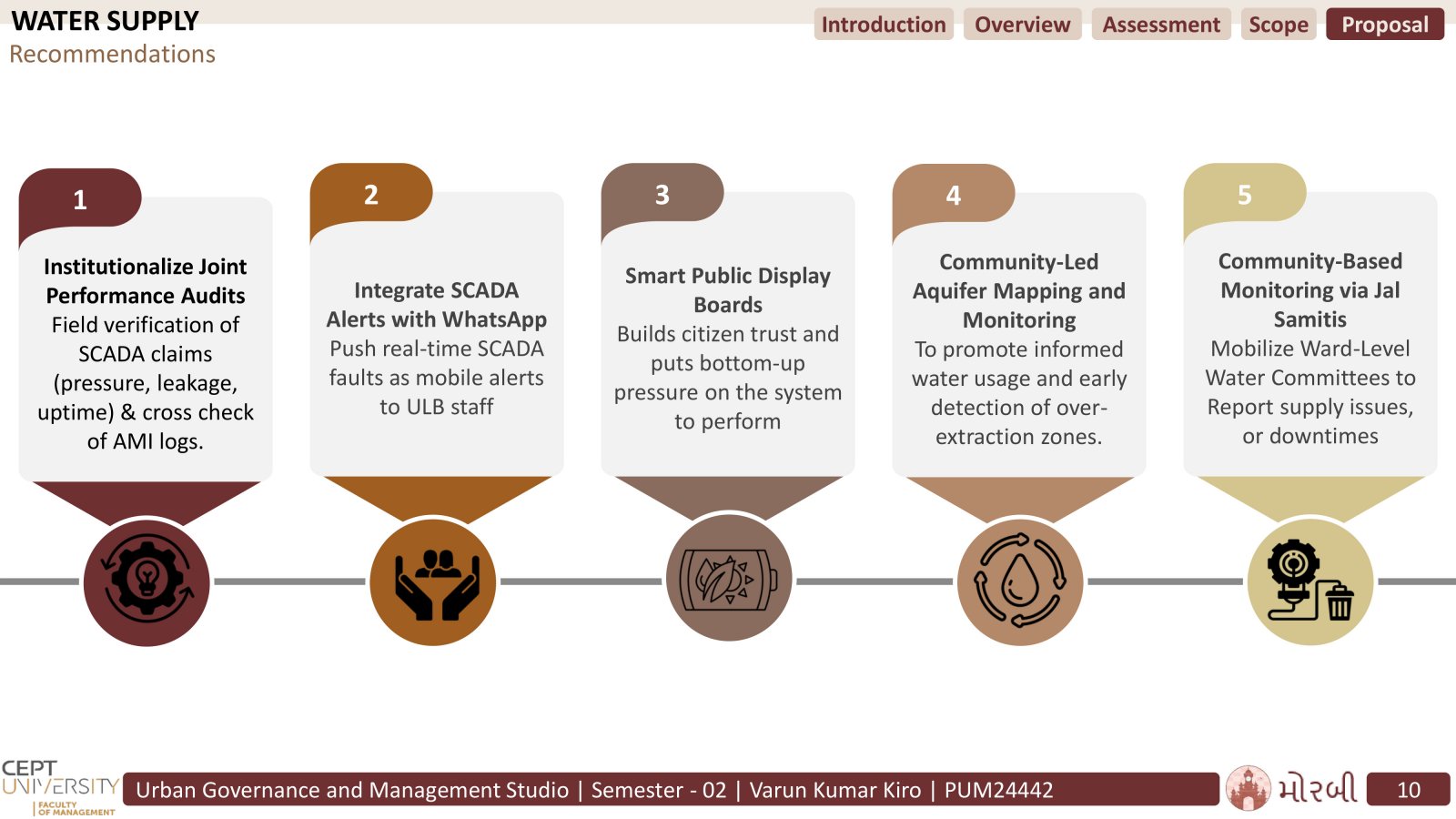Your browser is out-of-date!
For a richer surfing experience on our website, please update your browser. Update my browser now!
For a richer surfing experience on our website, please update your browser. Update my browser now!
This project focuses on assessing the critical challenges in water access, quality, and management across 13 wards and 9 villages of Morbi City. Current issues include inconsistent supply, high non-revenue water (28%), aging infrastructure, and administrative gaps. The city sources 95 MLD of water daily from Machhu Dam and Narmada pipelines but faces service delivery inefficiencies. Based on analysis, the project proposes implementing a city-wide SCADA system for real-time monitoring, enhancing rainwater harvesting, and improving distribution equity to ensure a smart, sustainable, and resilient water supply for Morbi's future.
